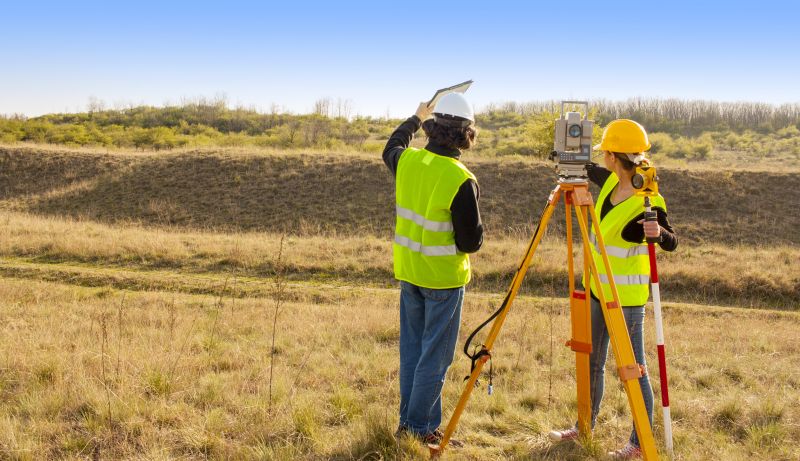Top-Rated Land Surveying Gadgets for Field Professionals
Review the most trusted surveying gadgets that improve productivity and measurement accuracy on-site.
 Land surveying is a fundamental component of construction, land development, and property management. Accurate measurement tools and equipment are essential for professionals to determine property boundaries, topography, and land features with precision. The array of available products for land surveying ranges from traditional measuring tapes to advanced electronic devices, each serving specific purposes depending on the scope and complexity of a project. Investing in reliable surveying equipment ensures data accuracy, enhances efficiency, and reduces the likelihood of costly errors.
Land surveying is a fundamental component of construction, land development, and property management. Accurate measurement tools and equipment are essential for professionals to determine property boundaries, topography, and land features with precision. The array of available products for land surveying ranges from traditional measuring tapes to advanced electronic devices, each serving specific purposes depending on the scope and complexity of a project. Investing in reliable surveying equipment ensures data accuracy, enhances efficiency, and reduces the likelihood of costly errors.
Top Overall Option
Electronic Total Station
An electronic total station combines electronic distance measurement with angular measurement, providing precise data collection capabilities. It is widely used for various surveying tasks, including boundary surveys, construction staking, and topographical mapping. Its integrated digital display, data storage, and compatibility with surveying software make it a versatile choice for professionals seeking accuracy and efficiency.
Types of Products For Land Surveyings
Optical Theodolites
Optical theodolites are used for measuring horizontal and vertical angles with high precision, essential for triangulation and topographic surveys.
GPS Survey Receivers
GPS survey receivers provide accurate geographic coordinates, ideal for large-scale land mapping and boundary determination.
Laser Scanners
Laser scanners capture detailed 3D data of land features and structures, facilitating comprehensive topographical analysis.
Drones with Mapping Software
Drones equipped with high-resolution cameras and mapping software enable aerial surveys and detailed land imagery.
Measuring Tapes and Chains
Traditional measuring tapes and chains are fundamental tools for quick, short-distance measurements and small-scale projects.
Levels and Spirit Levels
Levels help establish horizontal planes and elevations, critical for construction and grading tasks.
Digital Levels
Digital levels offer enhanced accuracy for elevation measurements, streamlining topographical surveys.
Plumb Bobs and Transit Levels
Plumb bobs and transit levels assist in establishing vertical reference points and sight lines.
Data Collectors
Data collectors interface with electronic surveying instruments to store and manage measurement data efficiently.
Surveying Software
Specialized software helps process, analyze, and visualize survey data for accurate mapping and planning.
Popular Choices
Total stations are commonly used for precise measurement and data collection across various surveying applications.
Handheld GPS devices are popular for quick, on-the-go location and boundary marking tasks.
Laser distance meters provide fast and accurate measurements of distances, useful for interior and exterior surveys.
Drones equipped with mapping software are trending for aerial surveys and capturing detailed land imagery.
Digital levels are favored for their ease of use and high accuracy in elevation measurements.
Optical theodolites remain a staple for angle measurements in traditional surveying workflows.
Portable 3D laser scanners are gaining popularity for detailed topographical and structural surveys.
Sturdy tripods are essential for stabilizing instruments like theodolites and total stations during measurements.
Range poles and stakes are used for marking specific points and reference locations on-site.
Tablets with survey apps facilitate field data entry and real-time mapping updates.
Modern land surveyors often rely on a combination of traditional and high-tech tools to complete their tasks effectively. For instance, total stations integrate electronic distance measurement with angular measurement capabilities, allowing for precise data collection over large areas. GPS-based systems enable surveyors to quickly gather geographic coordinates with high accuracy, especially in open terrains. Laser scanners and drones have also become popular for capturing detailed topographical data and creating comprehensive 3D models of land features.
Choosing the right products for land surveying involves understanding the specific requirements of each project, including the terrain, required precision, and budget constraints. Proper training and familiarity with the equipment are equally important to maximize their potential. When selecting tools, professionals should consider factors such as durability, ease of use, compatibility with other devices, and the availability of technical support. With the right combination of equipment, land surveyors can deliver accurate results efficiently and reliably.
Whether for small property boundary assessments or large-scale development projects, the right survey equipment can make a significant difference in the quality and speed of work. Staying informed about the latest technological advancements and product options helps professionals maintain high standards and adapt to evolving industry needs. It is essential to prioritize quality and accuracy to ensure the success of any surveying task.
Key Buying Considerations
- Accuracy and precision levels required for your projects
- Type of terrain and environmental conditions where equipment will be used
- Ease of use and learning curve associated with the equipment
- Durability and build quality for field conditions
- Compatibility with existing software and data management systems
- Battery life and power options for extended field use
- Portability and weight, especially for extensive site work
- Availability of technical support and warranty services
- Budget constraints and overall investment value
- Level of technological sophistication needed for specific tasks
- Ease of calibration and maintenance requirements
- Availability of accessories and replacement parts
- User reviews and industry reputation of the equipment
- Regulatory compliance and certification standards
This page contains affiliate links. We may earn a commission if you make a purchase through these links, at no additional cost to you.
